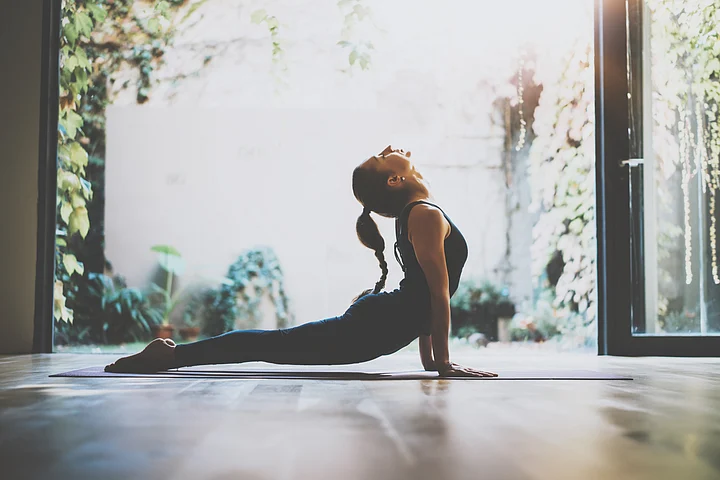High blood pressure, also known as hypertension, is one of the common health problems experienced by the people of the US. According to the Centers for Disease Control & Prevention, half of the adults have hypertension, and the worst part is that they don't even know it.
But there is nothing you have to worry about. High blood pressure is a common health condition and can be easily managed with a few lifestyle changes. Yoga is one of the things that may help.
Hypertension increases the risk of serious health conditions, such as heart attacks or strokes. Research shows that yoga can play a crucial role in lowering high blood pressure.
Corpse Pose
There are people with high blood pressure who are used to a fast-paced, high-pressure life and forget to slow down and relax. The final resting pose or corpse pose may help teach you how to be still and at peace.
Lie down on your back and open up your arms and legs. Then turn your palms upward.
After you get into this position, relax your whole body and face. Don't try to hold your position; try to feel heavy instead.
Try breathing naturally.
Try staying in this position for as long as you are comfortable.
When you want to come out of the pose, deepen your breath, then start to wiggle your fingers and toes to reawaken your body.
Make sure to do a full-body stretch from hands to feet.
Close your eyes and bring your knees to your chest and roll over to one side. Rest in the fetal position for a few breaths.
Return to a sitting position with the help of your hands.
Cobra Pose
Cobra pose, also known as Bhujangasana, helps improve blood circulation and oxygen in the entire body. This pose also relieves stress and promotes heart health. Cobra pose is also beneficial for asthma patients and helps make you more flexible.
It helps open your chest and hip flexors while calming the entire body. It may stimulate organs of the abdomen, lungs, and thyroid, and rejuvenate tired legs.
Lie on your back and place your hands at your sides, bend your knees, and your feet should be flat on the floor close to your butt.
Press into your feet while you lift your hips and torso to create a straight line from your knees to your shoulders.
Hold the pose for up to 30 seconds, then lower your hips to the floor.
Forward-Facing Dog Pose
This is one of the traditional yoga poses in which you bend forward. It can be restful and rejuvenating. This pose can help relieve back pain and sciatica. It helps manage imbalance and improves strength.
The pose focuses on muscles like hamstrings, deltoids, gluteus maximus, triceps, and quadriceps. You should:
Get on all fours.
Your hands should be aligned under your wrists and your knees under your hips.
Press into your hands, tuck your toes, and lift up your knees.
Move your sitting bones slowly up toward the ceiling.
Slightly bend your knees and lengthen your spine and tail bone.
Your heels should be slightly off the ground.
Press firmly into your hands and distribute the weight on both sides of the body.
Pay attention to the position of your hips and shoulders.
Your head should be in line with your upper arms and your chin tucked in slightly.
Hold this pose for at least one minute.
Bridge Pose
Bridge pose helps regulate blood pressure. It calms the brain and alleviates stress. It is beneficial in managing mild depression and is good for abdominal organs, lungs, menstrual pain, fatigue, headache, and anxiety.
Lie on your back and place your hands at your sides, bend your knees, and your feet should be flat on the floor close to your butt.
Press into your feet while you lift your hips and torso to create a straight line from your knees to your shoulders.
Hold the pose for up to 30 seconds, then lower your hips to the floor.
Legs-Up-the-Wall Pose
This is one of the most simple yoga poses that is performed against a wall. Viparita Karani offers extreme relaxation and relief from anxiety. It is suggested to hold the pose for at least 5 minutes for effective results.
You can keep your eyes shut and use a calming eye pillow if required. When your legs are flipped upwards, it helps the blood rush back down to the heart and has a calming effect.
(At The Quint, we question everything. Play an active role in shaping our journalism by becoming a member today.)
